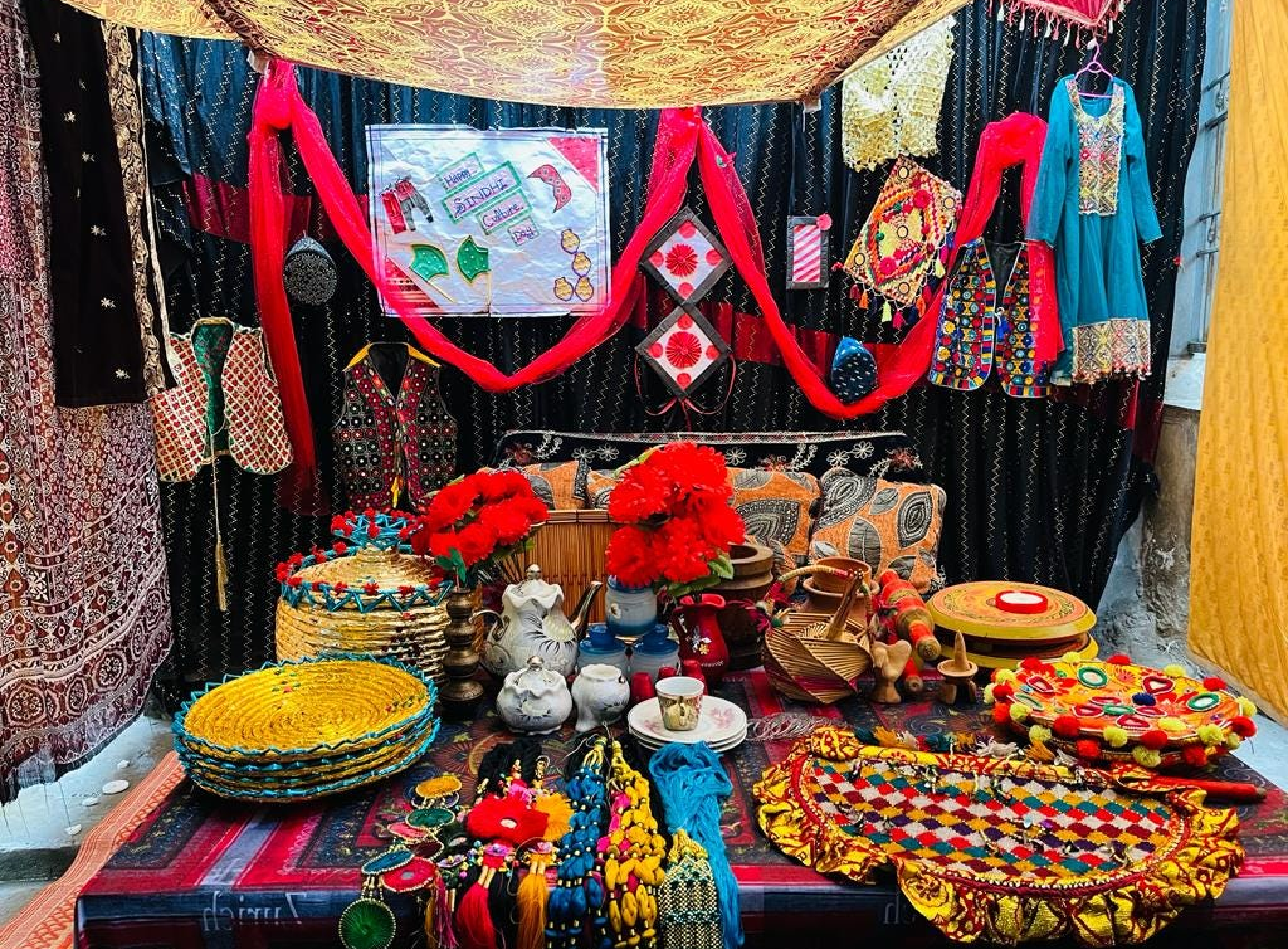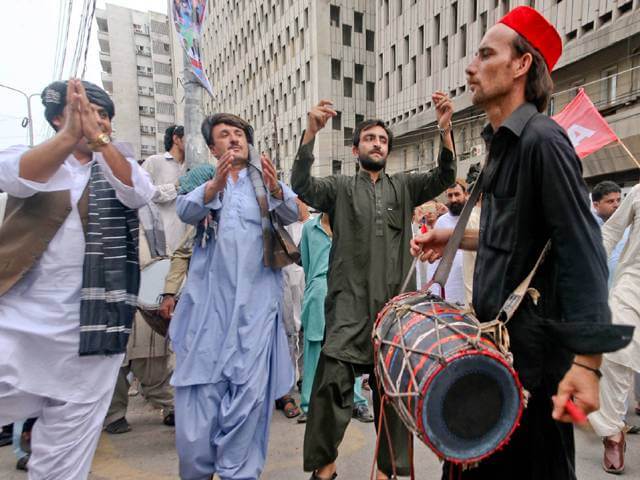Khyber Pakhtunkhwa (KPK)
Khyber Pakhtunkhwa (KPK) Culture: Khyber Pakhtunkhwa (abbreviated as KP; Urdu: خیبر پختونخوا; Pashto: خیبر پښتونخوا) is one of Pakistan’s four administrative provinces, located in the northwestern section of the country along the international border with Afghanistan. It was once known as the North-West Frontier Province (NWFP) until 2010 and is currently called by a variety of other titles.
Peshawar is Khyber Pakhtunkhwa’s provincial capital and largest city, with Mardan ranking second. It borders the Federally Administered Tribal Areas to the west; Gilgit-Baltistan to the northeast; and Azad Kashmir, Islamabad, and Punjab to the east and southeast. Khyber Pakhtunkhwa does not have an official boundary with Balochistan, which instead borders Federally Administered Tribal Areas. Khyber Pakhtunkhwa also has an international border with Afghanistan, which is linked by the famous Khyber Pass.
While it is Pakistan’s third-largest province by population and GDP, it is the smallest geographically. The province is home to 17.9% of Pakistan’s total population. The province is multiethnic, with the largest ethnic groups being Pashtuns, Hindkowans, Saraikis, and Chitralis.
Topography & Climate
Khyber Pakhtunkhwa is home to mountain ranges (including some of the largest mountains outside of the Himalayas), submontane areas, and hill-covered plains. The mountains generally run north-south, dividing the province from east to west.
KP is divided into two geographic zones: the northern and southern zones.
- The northern zone extends from the Hindu Kush to the limits of the Peshawar basin. The northern zone has a snowy and chilly environment, with considerable rains during the winter. It has pleasant summers with minimal rainfall, except in the capital Peshawar, which is scorching during the summer.
- The Southern Zone extends from Peshawar to the Derajat Basin. It features hot summers and somewhat frigid winters with little rain.
The climate varies with elevation. The mountainous areas have frigid winters and cool summers, while temperatures climb as you move south.
Khyber Pakhtunkhwa (KPK) Culture
The Pashtuns are Khyber Pakhtunkhwa’s largest ethnic group, having lived there for generations. Around 1.5 million Afghan refugees live in the region, with the majority being Pashtuns, followed by Tajiks, Hazaras, Gujjars, and other smaller groups. Pashtun culture is principally founded on Islam and Pashtunwali, a tribal code of conduct that includes four high-value components: nang (honor), badal (revenge), melmastiya (hospitality), and nanawata (right to shelter).
Pashtun men typically wear a Patoog-Korteh (known as salwar kameez in Urdu) with a pakol and a Pashtun cap. Women wear traditional long dresses and a small cloth to cover their hair. They also wear stunning handcrafted jewelry. There are numerous traditional dances, including the Attan, Khattak, Mahsud, and Waziri dance. Pashtuns are well-known for their writing and poetry, which come in a variety of forms with their themes, rhythms, and line lengths. Pashto folk music is prominent throughout the area. The primary instruments include rubab, mangey, and harmonium.
Dressing
Their clothing also reflects Pashtun culture, as men wear shalwar kameez with turbans, which are symbols of honor for them, and men typically wear Pakols as traditional headgear. Peshawari Chappal, a Pashtun cultural item, is the most well-known footwear among Pathans.
The attractive aspect of Pashtun culture is the united family system, which demonstrates a strong love and concern for all members. Pashtun culture also includes the Jirga system, which serves as a court for criminal cases.
Pushtun Culture Dances
Attan: The dancers perform to the music. Men and women do this dance in two to five steps, ending with a clap, and then repeating the performance. Typically, this dance is conducted with the vocalist controlling the speed and duration.
Khattak Danc: The Khattak ensemble performs this dance.
Mahsud dances: The Pashtun Mahsud tribe performs a particular dance performance with firearms. Initially done during the war, it later became a traditional dance. The performers dance barehanded and solely use large drums. Nowadays, dancers hold guns as they perform.
Waziri Dances: Two drummers and a flute player perform a distinct melody. Two people leave the circle, dance towards the drummers, and then return, moving and dancing the same way.
During the performance, both people turn around twice at the same moment, once facing each other and then opposite face to face. They march on separately after this, dancing in front of an audience.
Language
Pashto is the most widely spoken language, with 80% of the population speaking it natively. Urdu, the native language of the country, acts as a common language for ethnic groupings. Hindko, Seraiki, Khowar, and Kohistani are all spoken. Some languages, such as Badeshi, spoken alone in this area, are almost extinct.
Sights
Khyber Pakhtunkhwa is noted for its natural beauty and is a popular destination for adventurers and explorers. The rocky mountains and lush flora provide paradise-like views, while different archaeological and historical sites allow visitors to learn about the province’s long past. Here are some of the best attractions to see in the province.
- Saif-ul-Malook: a picturesque lake surrounded by mountains.
- Kaghan Valley is a huge, picturesque valley.
- Mahodand Lake: a picturesque lake for boating and fishing.
- Shandur Pass: significant mountain pass known as ‘The Roof of the World’
- Lulusar: a collection of mountain peaks and a picturesque lake.
- Tirich Mir is the highest mountain in the Hindu Kush and the world’s highest mountain outside of the Himalayas.
Food
Pashtun cuisine is consumed in Khyber Pakhtunkhwa. Pashtun cuisine is a fusion of Central, Eastern, South Asian, and Middle Eastern influences. The cuisine is mostly composed of meat dishes, dairy products, rice, flatbreads, vegetables, nuts, and fresh and dried fruits. Below are some samples of typical Pakhtun dishes:
Veggie Friendly:
- Kichrei: Kichrei is sticky medium-grain rice cooked with mung beans and onions, topped with melted quart sauce. This is typically consumed in the winter.
- Aushak: Aushak is vegetable and chive-filled dumplings served with tomato and yogurt sauce.
- Bolani: potato, vegetable, and lentil-packed flatbread.
- Bonjan: Eggplant prepared with potatoes and tomatoes.
- Bendei: Bendei is okra sautéed with onions and tomatoes.
- Masteh: freshly prepared yogurt.
- Naan (Dodai in Pashto): flat bread baked in vertical clay ovens.
- Shomleh: Shomleh is a drink made by combining yogurt and water, then adding dried mint leaves and a pinch of salt.
- Peshwari naan: Peshwari naan is packed with dried fruits and nuts.
Meat dishes:
- Mantu: beef dumplings.
- Shorwa: soup/stew made with potatoes, beans, and meat.
- Chapli kebab: fried flat patty prepared with minced meat.
- Chopan Kebab: charcoal-grilled lamb chops.
- Londei: Londei is spicy lamb or beef jerky served with rice. The meat is dried beforehand.



